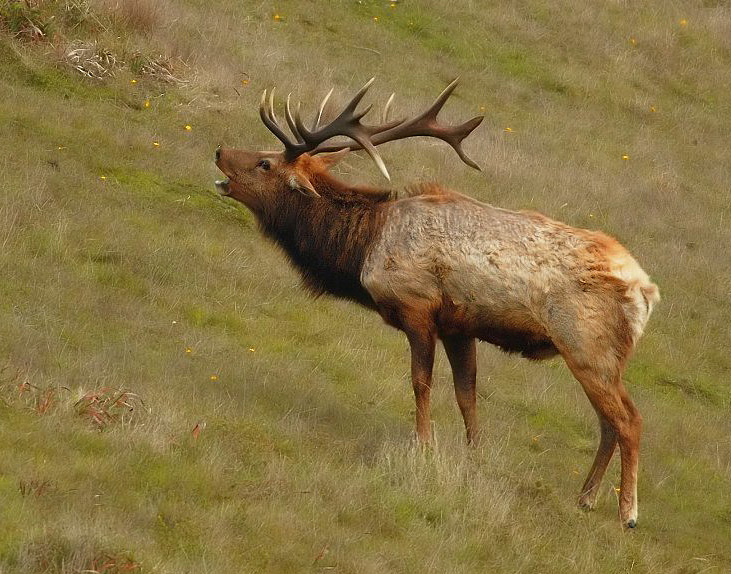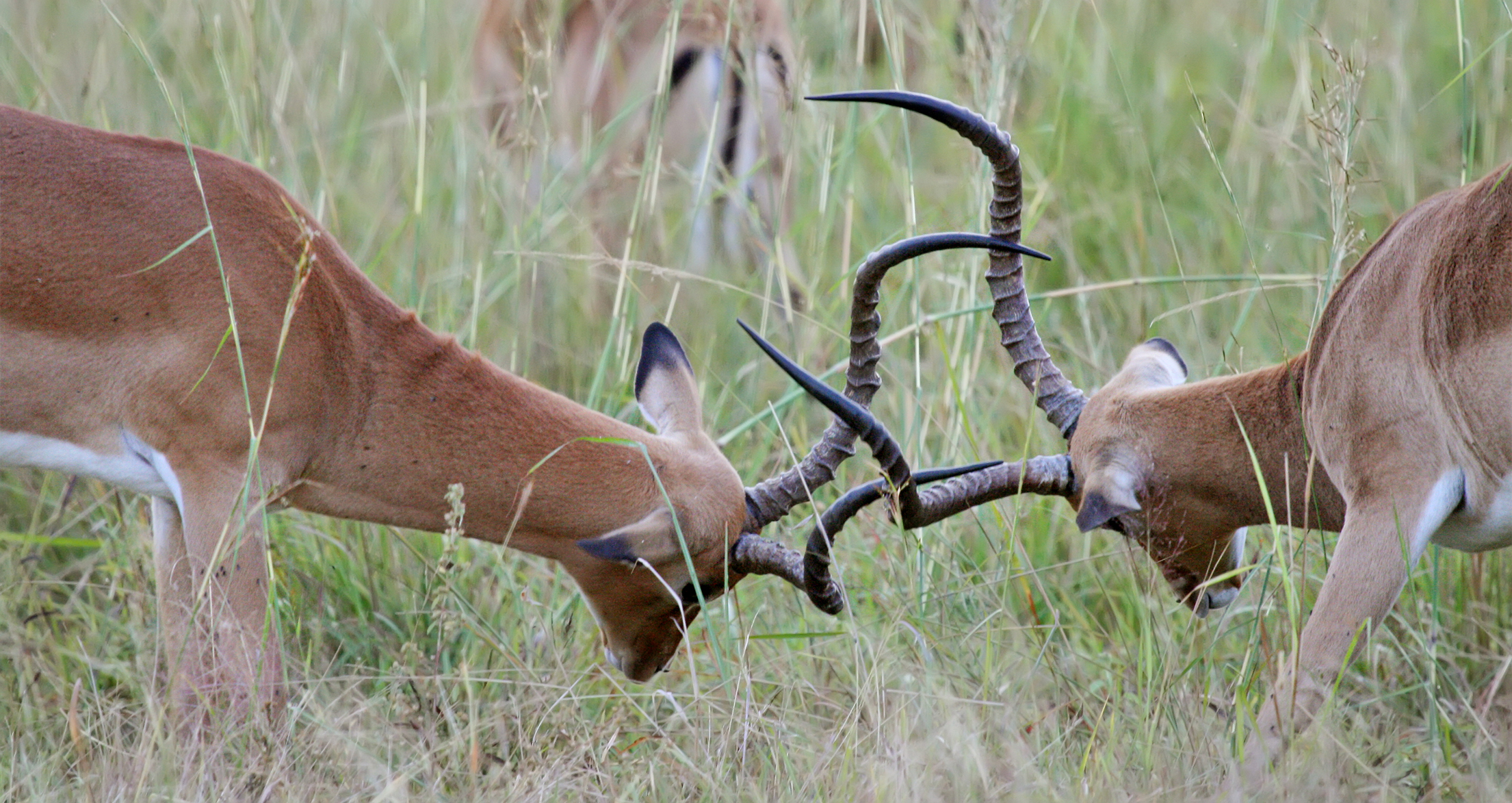|
Elk
The elk (''Cervus canadensis''), also known as the wapiti, is one of the largest species within the deer family, Cervidae, and one of the largest terrestrial mammals in its native range of North America and Central and East Asia. The common name of "elk" is open to confusion, as "elk" is the name used in British English for the larger ''Alces alces'', with similar names used by other European languages (German ''Elch'', Swedish ''älg'', and French ''élan''). In North America, the common name for ''Alces alces'' is "moose". The name "wapiti" is sometimes used for ''Cervus canadensis'', which derives from the Shawnee and Cree word ''waapiti'', meaning 'white rump'. Elk range in forest and forest-edge habitat, feeding on grasses, plants, leaves, and bark. Male elk have large antlers which they shed each year. Males also engage in ritualized mating behaviors during the rut, including posturing, antler wrestling (sparring), and ''bugling'', a loud series of vocalizations that ... [...More Info...] [...Related Items...] OR: [Wikipedia] [Google] [Baidu] |
Tule Elk
The tule elk (''Cervus canadensis nannodes'') is a subspecies of elk found only in California, ranging from the grasslands and marshlands of the Central Valley to the grassy hills on the coast. The subspecies name derives from the tule (), a species of sedge native to freshwater marshes on which the Tule elk feeds. When the Europeans first arrived, an estimated 500,000 tule elk roamed these regions, but by 1870 they were thought to be extirpated. However, in 1874–1875 a single breeding pair was discovered in the tule marshes of Buena Vista Lake in the southern San Joaquin Valley. Conservation measures were taken to protect the species in the 1970s. Today, the wild population exceeds 4,000. Tule elk can reliably be found in Carrizo Plain National Monument, Point Reyes National Seashore, portions of the Owens Valley from Lone Pine to Bishop, on Coyote Ridge in Santa Clara Valley, San Jose, California and in Pacheco State Park and areas surrounding San Luis Reservoir near L ... [...More Info...] [...Related Items...] OR: [Wikipedia] [Google] [Baidu] |
Eastern Elk
The eastern elk (''Cervus canadensis canadensis'') is an extinct subspecies or distinct population of elk that inhabited the northern and eastern United States, and southern Canada. The last eastern elk was shot in Pennsylvania on September 1, 1877. The subspecies was declared extinction, extinct by the United States Fish and Wildlife Service in 1880. Another subspecies of elk, the Merriam's elk, also became extinct at roughly the same time. As of 2017, the International Union for Conservation of Nature (IUCN) has reclassified all North American elk subspecies aside from the Tule elk, tule and Roosevelt elk, Roosevelt elk as ''C. c. canadensis''. If this is accurate, this means that the subspecies is not extinct, and has returned to the eastern U.S. in the form of the Rocky Mountain elk, introduced to the region in the 20th century. Description A full-grown bull could weigh up to 1,000 pounds, stand 50-60 inches tall at the shoulder, and carry a rack of antlers six feet in ... [...More Info...] [...Related Items...] OR: [Wikipedia] [Google] [Baidu] |
Rocky Mountain Elk
The Rocky Mountain elk (''Cervus canadensis nelsoni'') is a subspecies of elk found in the Rocky Mountains and adjacent ranges of Western North America. Habitat The winter ranges are most common in open forests and floodplain marshes in the lower elevations. In the summer it migrates to the subalpine forests and alpine basins. Elk have a diverse habitat range that they can reside in but are most often found in forest and forest edge habitat and in mountain regions they often stay in higher elevations during warmer months and migrate down lower in the winter. They may even come down the mountain and leave the forest into some grassland for part of the day but head back into the timber in the evening. Effects of climate change Climate change/warming can keep elk in their higher elevation habitats for longer into the winter than normal. Climate changes such as warming have in some cases even increased the seasonal range of elk in the winter. For example, in Yellowstone the climat ... [...More Info...] [...Related Items...] OR: [Wikipedia] [Google] [Baidu] |
Roosevelt Elk
The Roosevelt elk (''Cervus canadensis roosevelti)'', also known commonly as the Olympic elk and Roosevelt's wapiti, is the largest of the four surviving subspecies of elk (''Cervus canadensis'') in North America by body mass (although by antler size, both the Boone and Crockett (rifle) and Pope and Young (bow) records have Rocky Mountain elk being larger; none of the top 10 Roosevelt elk would score in the top 20 of Pope and Young's Rocky Mountain elk. In both species, mature bulls weigh from 700 to 1200 lbs. with very rare large bulls weighing more.) Its geographic range includes temperate rainforests of the Pacific Northwest, extending to parts of northern California. It was introduced to Alaska's Afognak, Kodiak, and Raspberry Islands in 1928 and reintroduced to British Columbia's Sunshine Coast from Vancouver Island in 1986. In December 1897, mammalogist C. Hart Merriam named the species after his friend Theodore Roosevelt, then Assistant Secretary of the US Navy. T ... [...More Info...] [...Related Items...] OR: [Wikipedia] [Google] [Baidu] |
Alces Alces
The moose (in North America) or elk (in Eurasia) (''Alces alces'') is a member of the New World deer subfamily and is the only species in the genus ''Alces''. It is the largest and heaviest extant species in the deer family. Most adult male moose have distinctive broad, palmate ("open-hand shaped") antlers; most other members of the deer family have antlers with a dendritic ("twig-like") configuration. Moose typically inhabit boreal forests and temperate broadleaf and mixed forests of the Northern Hemisphere in temperate to subarctic climates. Hunting and other human activities have caused a reduction in the size of the moose's range over time. It has been reintroduced to some of its former habitats. Currently, most moose occur in Canada, Alaska, New England (with Maine having the most of the lower 48 states), New York State, Fennoscandia, the Baltic states, Poland, Kazakhstan, and Russia. Its diet consists of both terrestrial and aquatic vegetation. Predators of moose incl ... [...More Info...] [...Related Items...] OR: [Wikipedia] [Google] [Baidu] |
Rut (mammalian Reproduction)
The rut (from the Latin ''rugire'', meaning "to roar") is the mating season of certain mammals, which includes ruminants such as deer, sheep, camels, goats, pronghorns, bison, giraffes and antelopes, and extends to others such as skunks and elephants. The rut is characterized in males by an increase in testosterone, exaggerated sexual dimorphisms, increased aggression, and increased interest in females. The males of the species may mark themselves with mud, undergo physiological changes or perform characteristic displays in order to make themselves more visually appealing to the females. Males also use olfaction to entice females to mate using secretions from glands and soaking in their own urine. During the rut (known as the ''rutting period'' and in domestic sheep management as '' tupping''), males often rub their antlers or horns on trees or shrubs, fight with each other, wallow in mud or dust, self-anoint and herd estrus females together. These displays make the male ... [...More Info...] [...Related Items...] OR: [Wikipedia] [Google] [Baidu] |
Cervus Elaphus
The red deer (''Cervus elaphus'') is one of the largest deer species. A male red deer is called a stag or hart, and a female is called a hind. The red deer inhabits most of Europe, the Caucasus Mountains region, Anatolia, Iran, and parts of western Asia. It also inhabits the Atlas Mountains of Northern Africa; its early ancestors are thought to have crossed over to Morocco, then to Algeria, Libya and Tunisia via the Strait of Gibraltar, becoming the only species of true deer (Cervidae) to inhabit Africa. Red deer have been introduced to other areas, including Australia, New Zealand, the United States, Canada, Peru, Uruguay, Chile and Argentina. In many parts of the world, the meat (venison) from red deer is used as a food source. Red deer are ruminants, characterized by a four-chambered stomach. Genetic evidence indicates that the red deer, as traditionally defined, is a species group, rather than a single species, though exactly how many species the group includes remains disp ... [...More Info...] [...Related Items...] OR: [Wikipedia] [Google] [Baidu] |




